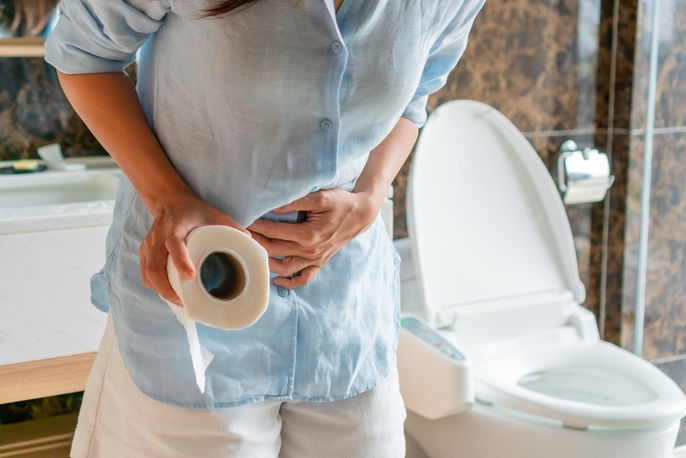A fecalith is a mass of hard, stone-like, dry feces that can accumulate in the rectum or in the final portion of the intestine. It is most commonly seen in older adults, bedridden people or people with paraplegia.
This situation can also be called "fecalitis" and occurs mainly due to chronic constipation or a decrease in bowel movements, resulting in other symptoms like bloating, abdominal pain and chronic bowel obstruction.
Treatment for a fecalith varies depending on the degree of obstruction and hardening of the stool. Laxatives may be used, but if they are ineffective, it can be manually removed by a gastroenterologist or nurse in a hospital setting.

Common symptoms
A fecalith typically presents with the following symptoms:
- Difficulty passing stool
- Abdominal pain and swelling
- Presence of blood and mucus in the stool
- Cramps
- Elimination of small or ball-shaped feces
- Sensation of heaviness in the anus region
It is important to see a gastroenterologist as soon as you experience any of the these symptoms to testing and treatment.
Confirming a diagnosis
A diagnosis is confirmed by a doctor through a symptoms evaluation and, in some cases, palpation of the anus and rectum.
Imaging tests, like an abdomen X-ray, may also be ordered, especially if there is a fecalith is suspected to be further up in the intestine rather than the rectum.
Common causes
Fecaliths are more common in older adults and those with limited mobility, as bowel movements with complete eliminations are difficult in these populations. This makes the stool more prone to staying in the body and drying out and hardening.
Some conditions, like Chagas disease, for example, can lead to the formation of fecaliths, and other risk factors associated with fecaliths include a sedentary lifestyle, nutrient-poor diet, reduced fluid intake, use of medication and constipation.
Treatment options
Treatment for fecaliths is aimed at remove the hardened stool and unobstructing the digestive system. The gastroenterologist may prescribe laxatives, suppositories or an enema, in order to stimulate fecalith elimination.
However, when none of these options are effective, or when the intestinal obstruction is severe, the doctor may recommend manual removal of the fecalith, which should be done in a hospital setting by a doctor or nurse.
It is important that fecaliths are treated as soon as they are identified to prevent complications, such as anal fissures, hemorrhoids, rectal prolapse, chronic constipation or megacolon






























